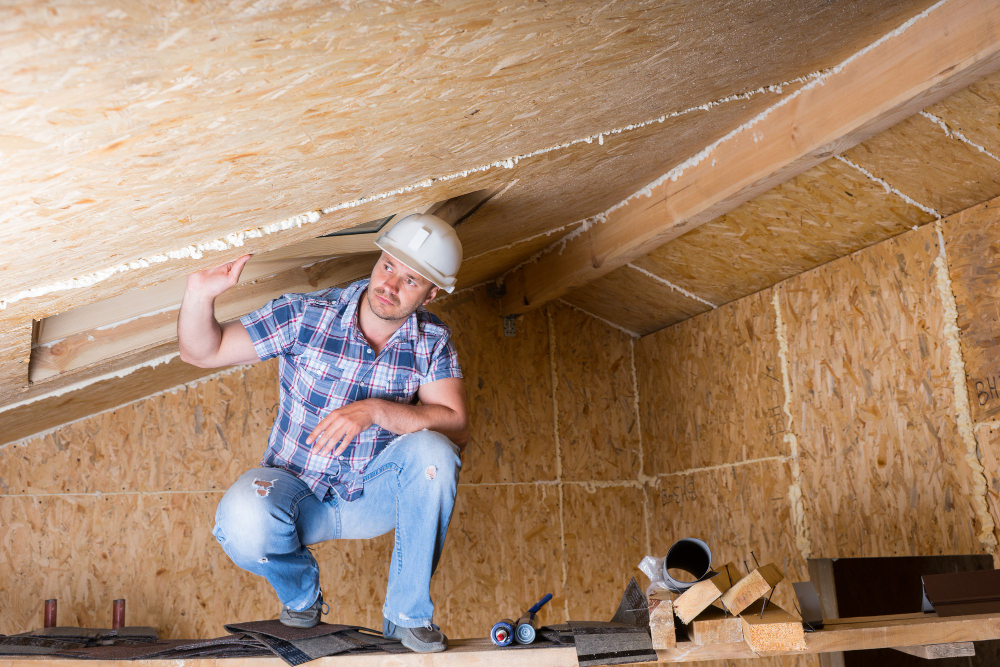Your attic roof rafters play a big role in keeping your home comfortable and energy-efficient, along with supporting your roof. If the proper insulation is not provided, the heat can escape in winter and increase the temperature of your home to an unbearable level in summer.
In today’s blog post, we will discuss the pros and cons of roof rafter insulation and how to do it. Moreover, we will also discuss different insulating materials to help you decide the best suited one for your home.
Pros and Cons of Insulating Roof Rafters
If you’re thinking about whether you should insulate your attic roof rafters or not, then knowing this will help you to make the decision.
Pros
- It helps to save energy and reduce your bills
- Keeps temperature consistent and comfortable
- Reduces outside noise
- Helps prevent moisture and mold formation
Cons
- It can cost more than floor insulation
- It may be tricky to install in tight spaces
- Needs proper ventilation to avoid moisture issues
How to Insulate Attic Roof Rafters from Inside
Putting insulation on attic rafters from the inside is not too hard if you go step by step:
1. Get Ready
- Firstly, fix the leaks and remove mold.
- Make sure the attic has good airflow.
- Clear the dust and remove old insulation.
2. Measure and Cut
- Measure each space between the rafters.
- Cut the insulation to fit those spaces.
- Try to make it fit perfectly without leaving any gaps.
3. Put in the insulation
- Install insulation between rafters without compressing it.
- Leave it fluffy—compressed material becomes ineffective.
- Leave a small air gap behind reflective insulation if necessary.
4. Seal the Gaps
- Seal cracks or edges using spray foam or caulk.
- Seal around vents, wires, or light openings.
- Check that no small holes are left open.
5. Keep yourself safe
- Wear gloves, goggles, and a mask
- Work in good lighting and walk on solid boards.
- To avoid falling, take small steps.
- Make sure to keep a first aid kit nearby.
Types of Insulation Materials
To choose the best insulation for attic rafters, know about your needs and budget first. The following are some options:
Fiberglass Batts
A budget-friendly and DIY option. Works well if fitted properly, but gaps can lower performance.
Spray Foam
Very effective at sealing gaps and keeping heat in or out. It’s expensive, and a professional installation is needed.
Cellulose
It is made from recycled materials and comes under an eco-friendly choice. Fills odd spaces well but may settle over time.
Foam Board or Reflective Insulation
Lightweight and strong. Reflective types are great for hot climates. They need careful cutting to fit correctly.
Tips based on the climate
The best way to insulate your attic rafters is based on the climate where you live. The following are some tips:
- Cold Areas: Use the insulation with a high R-value to keep heat inside.
- Hot Areas: Choose reflective or radiant insulation for blocking the heat.
- All Climates: Spray foam or foam board works well in both hot and cold weather.
Keeping Your Insulation in Good Shape
Maintaining regularly helps your attic insulation last longer and work better:
- Inspect insulation regularly for any damage or gaps.
- Replace any sagging or worn-out sections.
- Add radiant foil vents or weather stripping around the attic entrance.
Conclusion
Insulating your attic roof rafters will make your home energy-efficient and best for every season. It also lowers the energy bills and keeps your indoor temperature stable. If you do the maintenance regularly, your insulation will last longer.
Rockford Coastal Homes provides the best insulation for attic ceiling services and can maintain it to keep it working effectively for years.


